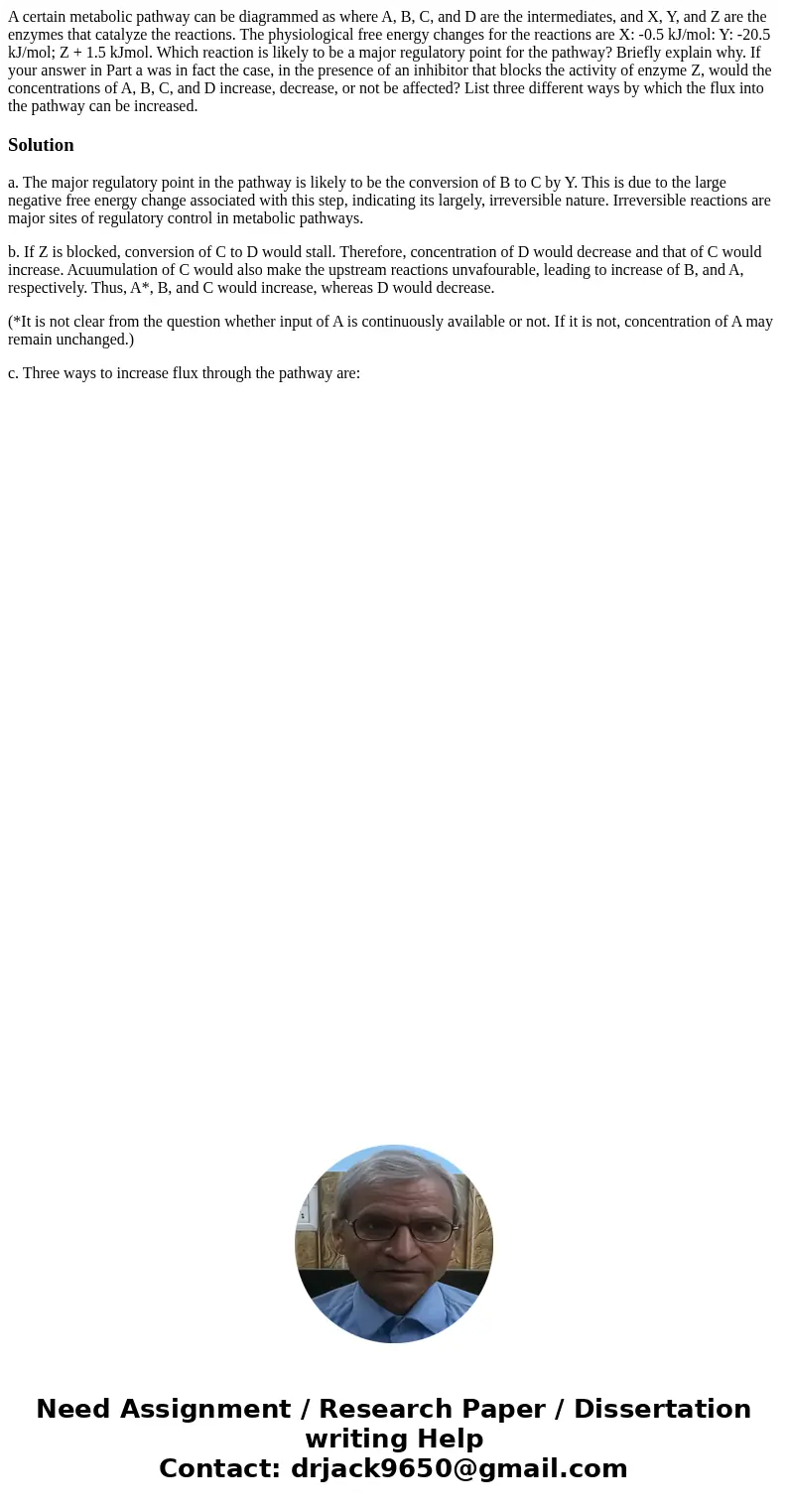A certain metabolic pathway can be diagrammed as where A B C
Solution
a. The major regulatory point in the pathway is likely to be the conversion of B to C by Y. This is due to the large negative free energy change associated with this step, indicating its largely, irreversible nature. Irreversible reactions are major sites of regulatory control in metabolic pathways.
b. If Z is blocked, conversion of C to D would stall. Therefore, concentration of D would decrease and that of C would increase. Acuumulation of C would also make the upstream reactions unvafourable, leading to increase of B, and A, respectively. Thus, A*, B, and C would increase, whereas D would decrease.
(*It is not clear from the question whether input of A is continuously available or not. If it is not, concentration of A may remain unchanged.)
c. Three ways to increase flux through the pathway are:

 Homework Sourse
Homework Sourse